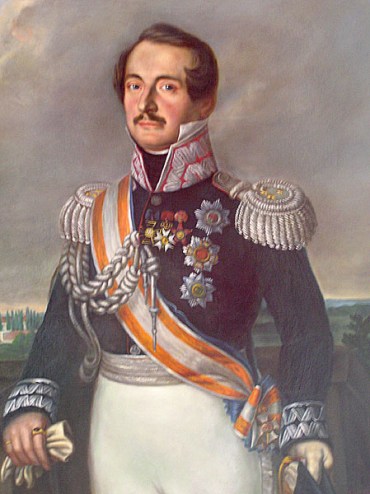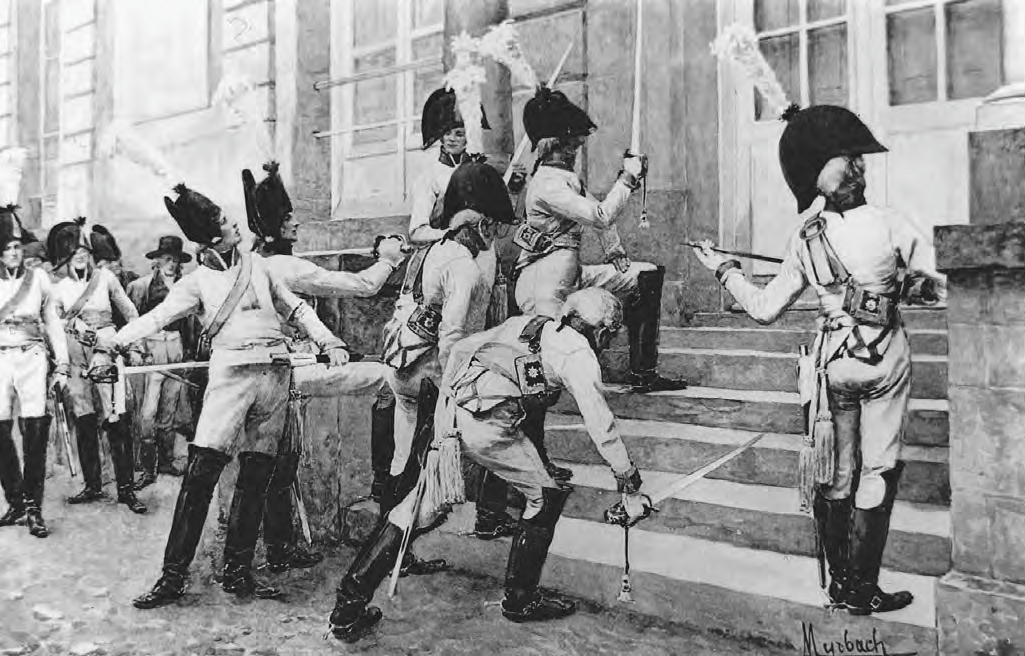|
Siege Of Kołobrzeg (1807)
The siege of Kolberg (also spelled Colberg or Kołobrzeg) took place from March to 2 July 1807 during the War of the Fourth Coalition, part of the Napoleonic Wars. An army of the First French Empire and several foreign troops (including Polish insurgents) of France besieged the fortified town of Kolberg, the only remaining Prussian-held fortress in the Province of Pomerania. The siege was unsuccessful and was lifted upon the announcement of the Peace of Tilsit. After Prussia lost the Battle of Jena–Auerstedt in late 1806, French troops marched north into Prussian Pomerania. Fortified Stettin (Szczecin) surrendered without battle, and the province became occupied by the French forces. Kolberg resisted, and the implementation of a French siege was delayed until March 1807 by the freikorps of Ferdinand von Schill operating around the fortress and capturing the assigned French commander of the siege, Victor-Perrin. During these months, the military commander of Kolberg, Lucad ... [...More Info...] [...Related Items...] OR: [Wikipedia] [Google] [Baidu] |
War Of The Fourth Coalition
The War of the Fourth Coalition () was a war spanning 1806–1807 that saw a multinational coalition fight against Napoleon's First French Empire, French Empire, subsequently being defeated. The main coalition partners were Kingdom of Prussia, Prussia and Russian Empire, Russia with Electorate of Saxony, Saxony, Franco-Swedish War, Sweden, and United Kingdom of Great Britain and Ireland, Great Britain also contributing. Excluding Prussia, some members of the coalition had previously been fighting France as part of the War of the Third Coalition, Third Coalition, and there was no intervening period of general peace. On 9 October 1806, Prussia declared war on France and joined a renewed coalition, fearing the rise in French power after the defeat of Austrian Empire, Austria and establishment of the French-sponsored Confederation of the Rhine in addition to having learned of French plans to cede Prussian-desired Electorate of Hanover, Hanover to Britain in exchange for peace. Prussi ... [...More Info...] [...Related Items...] OR: [Wikipedia] [Google] [Baidu] |
United Kingdom Of Great Britain And Ireland
The United Kingdom of Great Britain and Ireland was the union of the Kingdom of Great Britain and the Kingdom of Ireland into one sovereign state, established by the Acts of Union 1800, Acts of Union in 1801. It continued in this form until 1927, when it evolved into the United Kingdom, United Kingdom of Great Britain and Northern Ireland, after the Irish Free State gained a degree of independence in 1922. It was commonly known as Great Britain, Britain or England. Economic history of the United Kingdom, Rapid industrialisation that began in the decades prior to the state's formation continued up until the mid-19th century. The Great Famine (Ireland), Great Irish Famine, exacerbated by government inaction in the mid-19th century, led to Societal collapse, demographic collapse in much of Ireland and increased calls for Land Acts (Ireland), Irish land reform. The 19th century was an era of Industrial Revolution, and growth of trade and finance, in which Britain largely dominate ... [...More Info...] [...Related Items...] OR: [Wikipedia] [Google] [Baidu] |
Siege Of Magdeburg (1806)
The siege of Magdeburg (French: ''Siège de Magdebourg'') took place from 25 October to 8 November 1806 during the War of the Fourth Coalition. A French force, initially under the command of Marshal Joachim Murat, then a French army Corps under the command of Marshal Michel Ney laid siege and eventually obtained the surrender of Franz Kasimir von Kleist's Prussian force that had taken refuge in Magdeburg, Prussia's second city. Siege After the twin battles of Jena and Auerstaedt, the victorious Grande Armée pursued the remains of the Prussian army, a part of which was under the command of Prince Hohenlohe, who directed it towards the fortified city of Magdeburg. Commanding the French force, Marshal Murat requested Hohenlohe's surrender, which the Prince refused, managing to escape the besieged fortress. Command was delegated to General of Infantry Kleist, who still had a numerous garrison of 25,000 men. While the French force initially outnumbered the defenders, Emperor ... [...More Info...] [...Related Items...] OR: [Wikipedia] [Google] [Baidu] |
Battle Of Halle
In the Battle of Halle on 17 October 1806 a French corps led by Jean-Baptiste Bernadotte fought the Prussian Reserve under Eugene Frederick Henry, Duke of Württemberg. The French defeated their opponents, forcing the Prussians to retreat northeast toward Dessau after suffering heavy losses. The clash occurred in the War of the Fourth Coalition, part of the Napoleonic Wars. The city of Halle is located about 30 kilometers northwest of Leipzig on the Saale River. Emperor Napoleon I of France invaded the Electorate of Saxony and inflicted two disastrous defeats on the Prussian-Saxon armies on 14 October 1806. As the beaten armies fled, Marshal Bernadotte's corps marched north and found Duke Eugene's unblooded Reserve located at Halle. At the beginning of the encounter, two French divisions rushed the bridges over the Saale on the west side of the city. They overran a weak defending force and quickly occupied the city. Later in the day, Bernadotte's troops stormed out of Ha ... [...More Info...] [...Related Items...] OR: [Wikipedia] [Google] [Baidu] |
Capitulation Of Erfurt
In the Capitulation of Erfurt on 16 October 1806, a large body of troops from the Kingdom of Prussia under Lieutenant General the Prince of Orange surrendered to Marshal Joachim Murat of France, at the city of Erfurt (now in Germany). The Prussian soldiers were demoralized by their shattering defeat at the Battle of Jena–Auerstedt on 14 October and unwilling to put up much resistance. The event occurred during the War of the Fourth Coalition, part of the Napoleonic Wars. Erfurt is located on the Gera River about 40 kilometers west of Jena. Only eight days before, Emperor Napoleon I of France invaded the Electorate of Saxony with a large army and quickly inflicted two minor setbacks on his enemies. This was followed by the catastrophe of 14 October. In the aftermath of the battle, the organization of the Prussian army disintegrated. Large numbers of Prussian fugitives from the battle entered Erfurt and could not be induced to leave. When Murat's French cavalry arrived before ... [...More Info...] [...Related Items...] OR: [Wikipedia] [Google] [Baidu] |

